What is employee development?
Employee growth and development means helping employees to explore their interests and passions, build professional competencies and grow in the career direction that’s right for them. Done right, it means their future successes can directly help your company succeed. Their knowledge fuels your company’s goals, while benefiting them individually for years to come.
We usually define growth and employee development as a sister concept to training, but it extends further than that. It’s less about classroom learning and more about having a long-term plan for your employees that puts their curiosity and growth front and centre. It can be seen as a collaborative process, with you providing professional development opportunities and support while the employee gains hard and soft skills.
Employers have a significant responsibility for an employee’s professional development, but it should never be a top-down directive imposed on staff. Instead, it’s a process and a deliberate practice that involves the right tools, the right culture, and plenty of high-quality conversations between staff, managers, and leaders.
Download Now: 2023 Employee Experience Trends Report
Why is employee development important?
Employee growth is valuable for many reasons. But the most compelling one might be its impact on engagement.
Growth and development is one of the strongest drivers of employee engagement seen across organisational listening programs. For example, the Qualtrics 2020 Global Employee Experience Trends report showed ‘opportunities for learning and development’ as a key driver for employee engagement.
When you invest in employee development:
- Employees increase their knowledge and learn new skills, and abilities
- Leaders grow themselves and their teams – enabling team members to expand their responsibilities and work on diverse assignments
- The business gains higher productivity, efficiency, and retention1
The only thing worse than training your employees and having them leave is not training them and having them stay.
– Henry Ford
Other benefits include:
-
Employee retention
Employee retention is a huge challenge facing employers today. On average, it costs $4,000 to hire an employee, taking around 24 days to fill a position.To keep hold of your top talent, it’s essential that you offer employees opportunities for career growth and professional advancement. Get that right, with a robust employee development plan, and they’ll stay with you longer, as happy, engaged employees.
Training plans might be the most effective way to retain employees, if the stats are anything to go by. A recent LinkedIn study revealed that 94% of employees said they would stay at their companies longer if they invested in helping employees learn.
Introducing employees to training can revitalise their interest in their jobs, helping them to see challenges in new ways and providing better self-knowledge and even inspiration. Employees working in the same job for a long time without feeling that progression was possible for them might start to view themselves as potential future managers or team leaders, or in new roles elsewhere in the company. In this way, not only does training lower employee turnover or risk of attrition, it can also create new candidates for current jobs.
-
Employee performance
It makes sense that providing more training gives employees the skills they need to perform better. An impressive study by CSO Insights showed that just $500 worth of professional training led to a 46% improvement in win rates among sales managers. It’s a clear case of skills enhancement leading to higher employee productivity.
Helping people find more efficient and effective ways to do their jobs through training programs or individual coaching is also likely to boost employee motivation, too. Not having the right tools can be frustrating, and the same is true of a person’s abilities. New ideas gained through training can help turn this around.
-
Stronger employer brand
Providing obvious career paths and a supportive environment for learning is attractive to new hires. When potential employers offer professional development opportunities, it’s clear that they expect their skilled employees to enjoy career growth and are willing to invest in them.
With so many people re-evaluating their careers and considering new jobs or new careers, investing in your employer brand has never been so strategic.
Employee development industry trends
Before thinking about how to improve employee development, it’s useful to know about current trends and innovations in employee training and personal development. Here are some of the approaches leading the field.
Social learning for personal development
Social learning is when you acquire valuable skills or useful training materials, find that they work well and then share them with others so they can benefit from your discovery. For employers, this makes the task of providing learning easier.
A social learning environment is a space, usually, a digital one, where you can upvote, comment on or recommend training or learning opportunities within a community or peer group, like with LinkedIn or Facebook. The social element can help drive employee motivation.
Social learning also has benefits around reward and recognition. Socially broadcasting things like rewarding an employee for excellent work can motivate others to engage with development opportunities and encourage employee growth.
Hyper-individualisation
Organisations are moving beyond thinking that they need only provide a one-size-fits-all set of training courses or highly structured learning paths. They are beginning to recognise that learning has to be more tailored and based on an individual’s unique requirements.
In some companies, an employee’s development is an individualised journey. This means employees individually practice problem-solving and choose their own path as they build their professional skill set, develop soft skills and personal growth. Organisations can still provide structured learning, but potentially with the addition of looser systems that add an element of gamification to boost exploration and involvement in the programs.
Career Lattice vs Career Ladder
Staff development can take the traditional career ladder approach, where employees advance through the ranks in a hierarchical organisation, or the career lattice approach, which can support employees at a time when the employment landscape changes and people’s career journeys are less predictable.
The career ladder is the traditional, linear hierarchy we’ve seen historically, with a vertical journey through a defined career path. The career lattice is more representative of the kind of flat structures we are commonly seeing in start-ups and younger businesses or where organisations are flattening their structures intentionally.
In the lattice, employees are encouraged to consider lateral moves to round out their experiences. They may gain a deeper appreciation of other aspects of the business or find a new place to apply their skills.
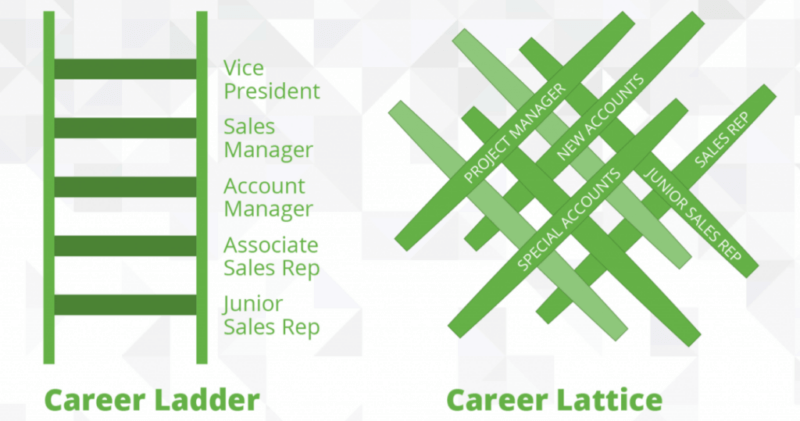
Image credit: Bizlibrary.com
Specialisation vs Generalism
For tenured employees, staying put in one role forever can be detrimental to personal growth and employee satisfaction levels. But what kind of role should they move to? For many, it’s a question of choosing between broader or deeper skillsets.
In business, what’s dangerous is not to evolve.
– Jeff Bezos
There’s often a push and pull between encouraging super-specialised skill sets, with employees taking a deep dive into highly specific areas of expertise, and developing generalists who can play multiple roles and be agile in their assignments.
Leaders should be able to help their teams think through their options, assess where their strengths lie, and explore when to go deeper or expand to be more versatile. 360 degree feedback can be a great way to help assess strengths and sense-check personal assumptions about where someone’s strengths lie.
What are employee development plans?
Good employers want to help their employees find purpose in their work and inspire their curiosity. One way of doing this is to involve them in the big picture, i.e. your corporate strategy. By doing so, you’re giving them the ability to set goals at the level of the overall vision, rather than focusing on one-time achievements that don’t obviously tie in to your organisational goals.
Communication within the company is critical. Employers often benefit from a system that encourages managers and employees to communicate honestly and authentically, so there is a collaborative space to explore the employee’s professional life.
A simple paper-based employee development plan is an action plan that covers the…
- employee’s training and development goals
- skillsets they want to gain
- actions needed to acquire the new skill
- resources that the employees can use
- check-ins and additional training schedule
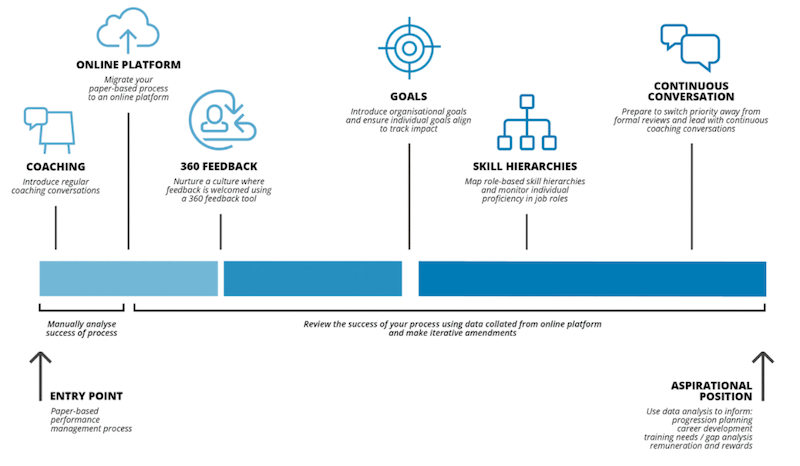
Image from totaralearning.com
A good professional development program should allow you to retain your employees by:
- Developing the top talent needed to improve organisational strength and achieve – business goals
- Developing skilled and adaptable teams needed to drive performance and navigate change
- Being able to proactively act, easily measure, and clearly communicate results and business impact. This may require a robust software solution that can help you measure the individual employee development plans, but also the current workforce as well.
How do you create a robust employee development plan?
Creating an employee development plan helps your employees learn new abilities related to the job they’re currently in, while also developing their potential and building capabilities for taking on new roles, or promotion, within the company.
Here’s how to create robust employee development plans, from skills gap analysis to reporting back to stakeholders the success of your initiative.
1. Identify skills gaps
Your first port of call when designing your employee development plan is to identify areas where your employees’ skills are lacking. An analysis of on the job training needs will help you discover:
- which skills are underdeveloped or absent
- the employees who need the most urgent training.
This skills gap analysis can be aligned with your organisational goals. It identifies what’s going well in the workforce, and what’s going less well. You can then target your training initiatives and resources just to the problem areas, for maximum return on investment.
2. Identify which employees have potential for career and leadership growth
Ask managers and leaders about employees who have expressed an interest in learning and training and are interested in career development plans as personal goals. Direct your first efforts towards those people, building on the abilities and experience they already have, and also earmarking them for management training and leadership roles when they (and you) are ready.
There’s a big advantage to identifying employees with potential, and stating your commitment to helping them develop their personal career goals: top talent who may have been considering jumping ship to another organisation might be more inclined to stay and continue their professional development with you. They feel appreciated and treasured, and you retain your most able and talented employees.
3. Align with employee and company goals
You’ve identified the skills gaps in your workforce, and the employees with the most potential for developing as future leaders. You now need to join the two up.
You’ll need to involve employees in your employee development plan. What are their career goals? What are the business’s goals? Can you find a way to align the two? Can you think creatively to let your ambitious employees shape the direction of your organisation, with a view to managing it some day?
Discussions – one on ones, 360 degree feedback, and engagement surveys are great ways to measure how satisfied employees are with their jobs. Surveys will also pinpoint the types of training individual employees need, the areas they want to learn more about, and how they want to receive that training – on courses, online, in seminars, social learning, conferences, etc.
4. Grow your own talent
Where do you want your company to be in the next five years? Or the next 10? Or even 20? Chances are, you’re planning to grow your business over the next few years. In that case, have you considered how many managers you’ll need? How many teams? Are you researching and developing new products and services? Exploring new markets and industries?
Most importantly, do you have the talented, trained workforce who will be able to grow your company to meet those ambitions? Your employee development plan depends on looking to the future rather than simply training and developing for the company you have currently. You’ll need to take a long look at where and how you want to grow your business and nurture your talent base to take it forward.
5. Use employee development plan solutions to guide you
Great news! You don’t have to create an employee development plan from scratch. There are plenty of good ones out there to improve your employees’ experience by increasing access to opportunities for skills development, career development and growth, and coaching.
With this valuable resource, you’ll be able to:
- Identify the gaps in your existing employee growth plan and development initiatives; you’ll also see where to focus your improvements and investments to have the biggest impact on your people.
- Use intelligent employee development program design, combining best practices, easy distribution, and standardised reporting and dashboards.
- Access prebuilt employee development plan templates for easy survey distribution, real-time data analysis, and easy-to-use reports or dashboards.
- Gain insights from your professional development plans and actionable program results faster.
Consider using a two-pronged approach for your professional development plan:
- An individual employee development plan template to help employees plan their personal career goals and how they could align them with your business, and
- A succession planning template to look futureward and pinpoint where and when the company needs to hire people and expand.
Hard and soft skills
Many employers find that not all new employees come in with the requisite soft skills for their roles. That’s especially true among workers early in their careers whose experience may be academic rather than professional. Today’s workplace with its emphasis on remote and hybrid working means that an employee’s abilities to relate to others, show empathy and communicate clearly are more important than ever.
Identifying where soft vs hard skills should be targeted, and how best to upskill in each, is essential for employees as they choose their goals.
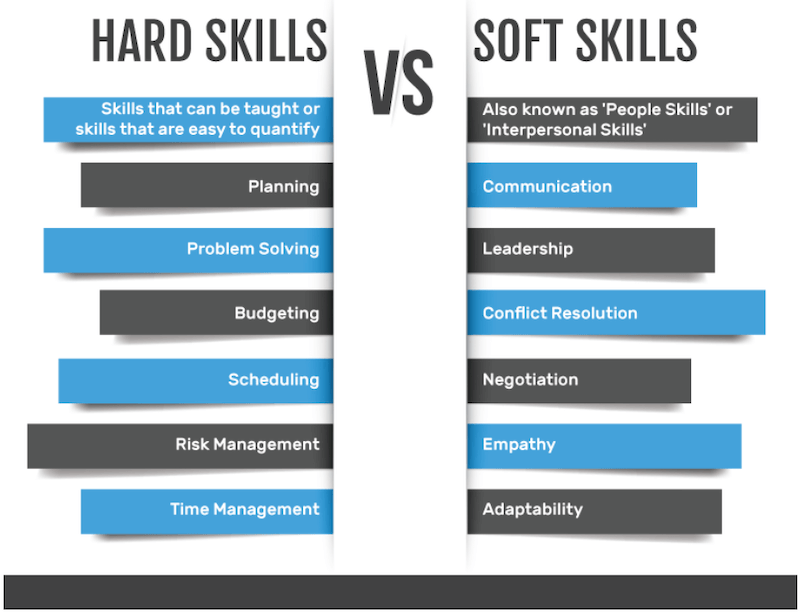
Image from edupristine.com
Employee development plan examples
Effective employee development plans will identify key areas to focus on for both employee and company growth:
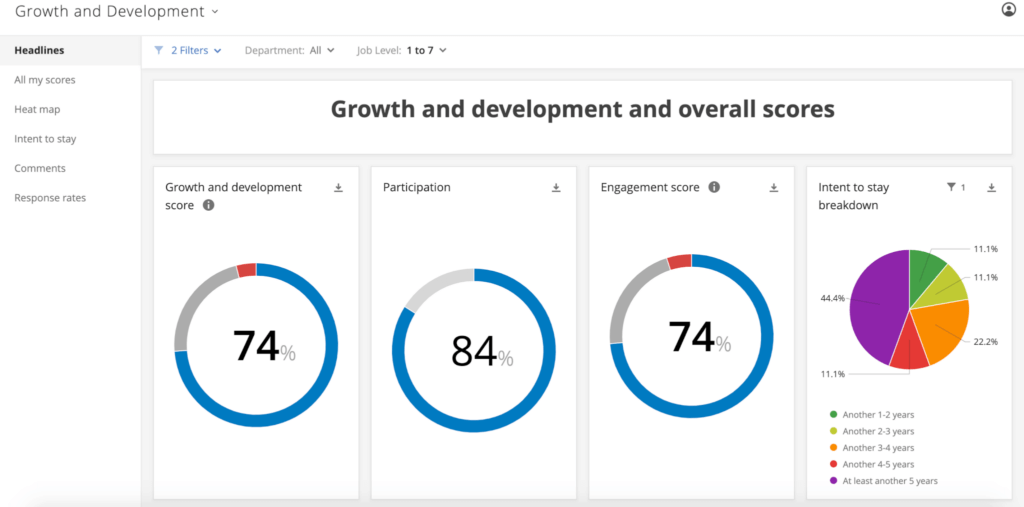
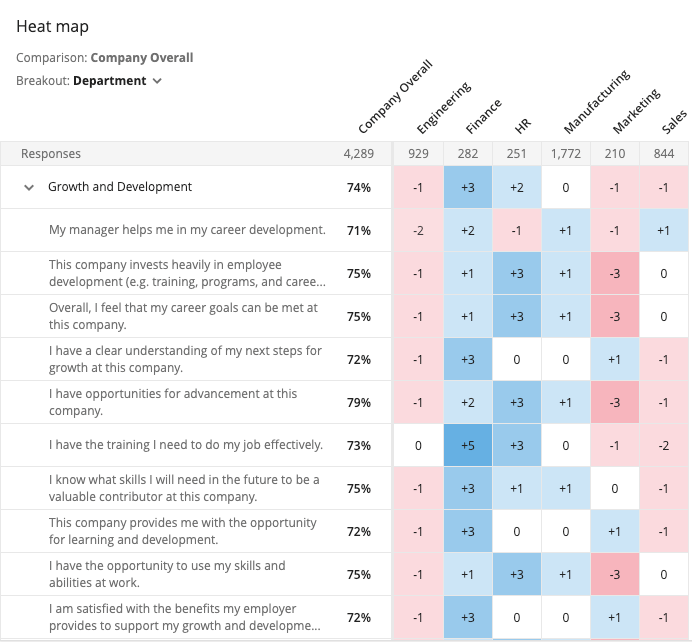
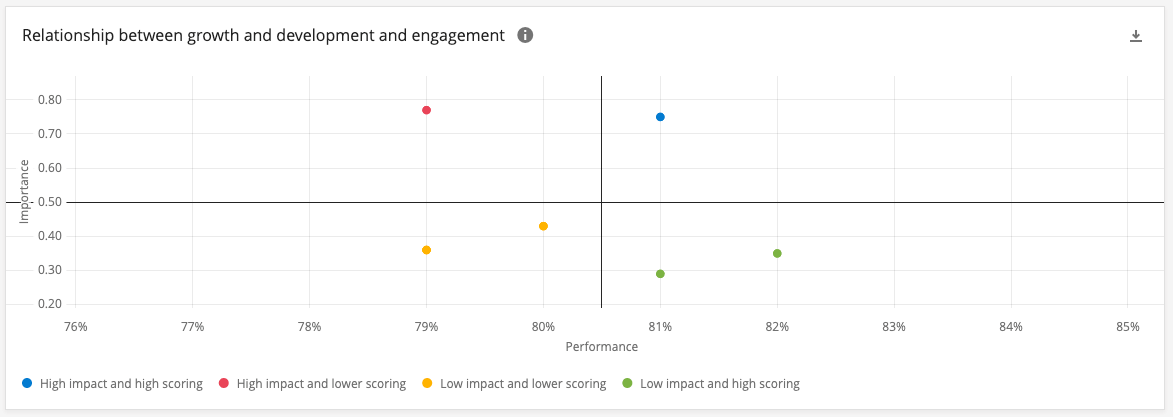
Learn about our Employee Growth and Development Guided Program
Employee development plan checklist for managers
1. Make time and space for a learning culture
Your company culture is an important ingredient in the success of continuous development, and can promote employee growth in an organic way. To help support a culture that helps employees grow,
- Don’t unintentionally punish employees for attending professional training opportunities. When you offer training, adjust each attendee’s work schedule to avoid putting pressure on employees to complete their day-to-day assignments on top of the training.
- Support and reinforce the value of a training program through feedback. Ask your employee what’s important by asking them questions about what they’ve learned and their new skills.
- During and after staff development, encourage employees to practice their new knowledge and share their improved performance with others. This could happen through cross-departmental collaboration.
2. Leverage the power of ownership
This is known as the IKEA effect (4) – it’s the idea that you love something more when you make it yourself. This is one of the reasons that we encourage every employee’s ownership of their own professional development. When done correctly, it leads to more engagement and pride in the end result.
This might mean asking your people to design their own employee development plan, rather than being told to use a standard employee development plan.
3. Budget for learning (and training)
Make sure development is seen as an essential investment of your people’s valuable time, and express this in terms of time and dollars. If you’re in HR, you may think of this differently than if you’re a frontline leader working with teams, but either way, be protective of your budget and proud of your priorities.
Don’t let the time and money you’re putting into the effort be seen as a tertiary goal or a compliance activity – it’s a key component of your bottom line results.
4. Push progress, not perfection
Sometimes the best course of action is just to get started, and the act of beginning and committing can have huge value in itself. Being overly results-driven can lead to a temptation to rush, but when it comes to development, priorities are always changing and – with a mastery approach – may never be truly finished. Remember, we can move mountains a pebble at a time with consistency and persistence.
5. Remember that development is a practice
Like meditation or physical fitness, development is something that happens as a practice. It is maintained throughout the whole lifecycle of employment and at all levels of an organisation.
If a business sees professional development as something that’s been implemented and completed on an annual basis, the program may be doomed to feel burdensome and compliance-driven rather than expanding the potential opportunities for employees.
6. Put learning into context
Take a cue from the idea of social learning and place knowledge where it’s needed. Break out of the training course mould and adopt a just-in-time mindset, so that information is available to staff when they’re about to do a task or begin a process. Lunch-and-learns, team-created posters, digital tooltips, or even post-it notes can help you out here.
Reward people for sharing when they learn something new and useful. Learning takes hold when it is applied and we gain mastery over concepts as we practice them in real-world problem-solving settings.
How can you turn employee development into an engaged workforce?
Remember that employees bring their own unique needs and objectives to work and are in varying stages in their personal and professional lives. Despite this variety, companies often seek to understand employees through “one-size-fits-all” feedback programs that, at best, are analysing feedback by department, or job classifications.
To drive more actionable insights to improve internal career development, companies should instead examine feedback by employee personas and journeys tapping into a combination of experience data (X-data) and operational data (O-data). This is where Employee Experience Management comes in:
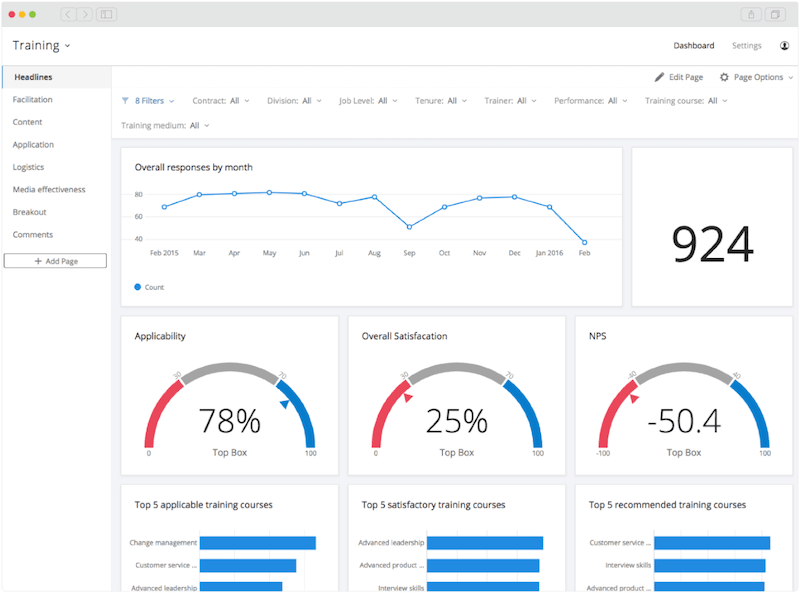
This will also help with decreasing employee attrition rates and attracting new hires and job seekers with your commitment to your people.
The Qualtrics Employee Experience Management solution can help your employee development plan and internal training real-time feedback. This helps you:
- Understand the effectiveness of training and how courses are impacting key metrics
- Link training history to performance data to gauge the short- and long-term impact of training
- Invest in training programs that deliver tangible results and drive up performance
2023 Employee Experience Trends Report

This article was written by the EmployeeXM team
Our EX Scientists are a global team of Employee Experience consultants who deliver advisory services for our clients to help them design and deliver world class EX strategies & programs. They provide empirically driven, best practice solutions.
Citations:
1Qualtrics 2020 Global Employee Experience Trends Report
2Kruger, Justin; Dunning, David (1999). “Unskilled and Unaware of It: How Difficulties in Recognizing One’s Own Incompetence Lead to Inflated Self-Assessments”. Journal of Personality and Social Psychology. 77 (6): 1121–1134.
3Dweck, Carol S.; Leggett, Ellen L. (1988). “A social-cognitive approach to motivation and personality”. Psychological Review. 95 (2): 256–273.
4Norton, Michael; Mochon, Daniel; Ariely, Dan (9 September 2011). “The IKEA effect: When labor leads to love” (PDF). Journal of Consumer Psychology. 22 (3): 453–460.